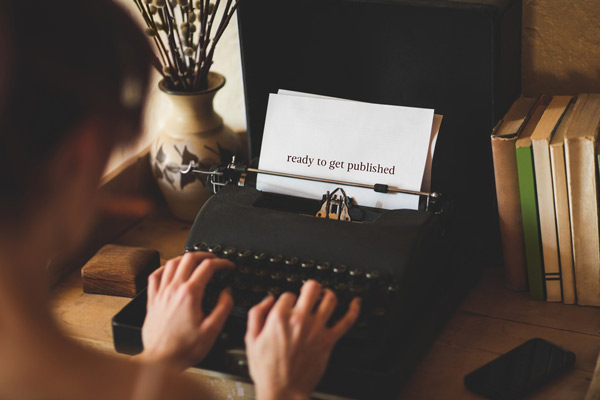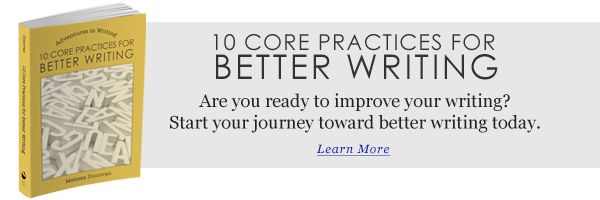Your short story is finished. Your poem is polished. Your personal essay has been proofread. Now you’re ready to submit your creative writing project for publication.
How do you do it? Where do you find the right publication? What materials should you send? Should you use email or snail mail? How long do you wait before following up? And what if your piece is rejected?
For many writers, the submission process is a drag because it doesn’t involve writing, and let’s face it, most of us are in it for the writing.
But there’s more to being a writer than just writing, especially if you want your work to be read or if you want to make a living as a writer.
Tips for Submitting Your Creative Writing and Getting Published
If you approach the submission process strategically and professionally, you’ll increase the chances that your work will be accepted and published. Whether you’re submitting to agents or editors, here are some tips for submitting your work and getting published:
- Take some time to familiarize yourself with various agents, publishing houses, and publications in your genre. Send your work to the ones that are a good fit for your form, genre, and style.
- Use the library or visit a local, independent bookstore to get copies of print publications like literary journals. You can also try college bookstores. Peruse them in the aisles if you wish, but keep in mind that buying copies of these publications helps support them — and other writers.
- You’ll find submission guidelines on most agents’ and publications’ websites. Otherwise, they’ll be in the publication itself. Review the guidelines carefully as they contain instructions on how to submit your work. This is crucial because agents and publications have their own submission guidelines.
- Follow the submission guidelines to the letter. Agents and publications that are overwhelmed with submissions might toss out any that stray from the guidelines they’ve established.
- In some cases, the guidelines may refer to a style guide. If this is the case, you might need to buy a style guide and revise your work so it will be in accordance with the guidelines.
- Keep your query and cover letters succinct and professional. Same goes for a synopsis (if applicable). Don’t try any fancy antics to get agents’ or editors’ attention. They see gimmicks all the time.
- Once you’ve sent your submission, sit back and wait. Do not harass or annoy agents or editors by bombarding them with follow-ups.
- Many submission guidelines include information about how long it should take to receive a response. Once that allotment of time has passed, go ahead and send a single follow-up. Ask if they received your submission. Be professional.
- If there is no indication of how long it should take for you to receive a response, wait six weeks to three months before following up.
- If you receive an acceptance, great! If you receive a rejection, accept it graciously and get back to work. Don’t give up! If your rejection includes a critique or any helpful feedback, be grateful (most agents and editors don’t take time to provide feedback) and apply it to your future creative writing projects.
Ready, Set, Submit
Submitting your work is difficult but exciting (and a little bit scary). Hopefully you’ll get lucky, but remember that luck comes most frequently to those who have prepared for it with hard work. If your writing gets rejected, try again. Send the same piece to another agent or publication and keep producing fresh work.
Remember, creative writing is hard work. We writers have to wear many different hats. We must be artists, grammarians, and communicators. We have to be publicists and marketing experts. And we have to become pros at submitting our work.
Otherwise it may never end up in readers’ hands.
Do you have any tips to add? Have you submitted your creative writing to agents or publications? Do you have any strategies for getting published? Share your thoughts by leaving a comment.






Thank you for the tips. I am a thirteen year old writer, and although that might seem young to most who are reading this it really isn’t. I found my ability to write last year and have added on to my knowledge since. Maybe in a couple years (or more hah) you will be reading my books. Let’s not say maybe though(:
Thirteen is about how old I was when I started writing. Keep at it, and don’t let anyone tell you that you’re too young.
I pitch books to publishers. The youngest author I got a contract for was 11 years old. The book was called, “The Bully in the Mirror” by Shanaya Fastje.
Your age doesn’t matter. If your subject is trending and you have a strong following, those are 2 aspects that will get an agent or publisher’s attention.
In 6th grade, I had 60 handwritten pages of a novel about a foster child and a horse, and oodles of poetry and prose. You go girl, and please don’t think that you can’t amaze an agent or publisher. Writing is an art and as a former art teacher, I cannot tell you how many middle school students have bodies of work that most adults would die for.
Honest to God, I bookmarked this and I’m sending every client who asks me how to publish right here. Great post, Melissa! And one that’s necessary to anyone – even the nonwriter authors – who’s thinking of publishing a book.
Thanks, Lori! My latest project is sifting through dozens of literary mags to see which ones are a good fit for my work. I wanted to make sure I had a clear outline of the submission process before tackling it. Glad you found it useful!
I write short stories and poems, I’ve never taken a writing class, I’m going to say it’s a gift from God.
If you’re vying for a particular magazine, it’s also wise to read up on what their general mood or tone is. Keep your own quality but consider the magazine’s essence.
Great advice, Sarah. Thanks!
I love this post, Melissa. It acts as a checklist of some sort for short story writers. Fact is, many writers may be overwhelmed with reading guidelines, writing to magazines and publishing houses, and keeping track of their submissions. This should solve the problem. It’s simple, maybe heard-before tips, but it’s not easy.
I’m glad you found this post helpful. Good luck with your submissions!
I wrote a nonfiction book about 15 years ago and using the above process received an offer from a major New York publisher. After studying it we decided to reject it. The publishing house was offering 6% which I understand is about normal. It would amount to about $1.50 per book. I asked my wife how hard can it be to publish a book? She’s written dozens of financial books, a very small niche I understand, but was still familiar with how to format a book. We prepared my manuscript, did the graphic work for the cover, and sent it to a local printer. For a few thousand dollars they printed a couple thousand copies, and did a beautiful job. They were fine hardcover books with a beautiful dust jacket. We sold all 2,000 copies at $25 each. A far cry from the $5000 we would have received from the New York publisher. This book is in its fifth printing. Now understand, we were able to market it successfully because we aimed it at the people I wrote the book for. We knew who they were, and we sold directly to them. This would generally not work with fiction, however, but due to the success of this particular work I am now writing my 20th novel, and marketing it to the same people who bought the original non-fiction book. if you don’t think you can publish your own book, then go with one of the major online publishers. Try Amazon. The difference is 6% from a New York Publishing House versus 70% from Amazon Kindle, or 25% from Amazon Print books.
It’s important to decide why you’re writing. if you are writing because you have to, because you get up every morning with ideas in your head and you’re not able to contain a cogent thought until you write all those things down, that’s great. For those who would actually like to earn a little money, there are other options available, but you must know your market. Anyone who writes fiction without having identified a specific market and then tries to sell books, is wasting their time.
Actually, I would like to find an agent now who could sell my books to foreign language audiences, and to market my books to Hollywood. I don’t really need any help selling my books to the general public.
Good luck, and be prepared for a long slog. I sent enquiries out to over 180 agents and not one ever asked to read one of my books. At the time apparently, if you didn’t write about mommy porn, vampires, or zombies you didn’t have a prayer of getting your book published. Know your market. And be prepared for overwhelming, mind-numbing, soul eviscerating rejection. It builds character.
It’s hard putting yourself out there. You have to be ready for rejection and that can hurt. It took me many, many years to get a list of credits to my name and that’s okay because now I’m very proud of the online publications that have accepted and liked my poetry. You need a sense of humor when you do get those rejections. I like to make the standing joke about “wallpapering my room” with them (even though almost everything comes through e-mail now). A good place to start is with university or college literary magazines that won’t make you rich but will reward you with copies of the magazine. And thank you for your work.
Hi Susan. Thanks for your comment. Rejections sting. I too like the idea of “wallpapering my room” with them. Each rejection is one stop closer to an acceptance!